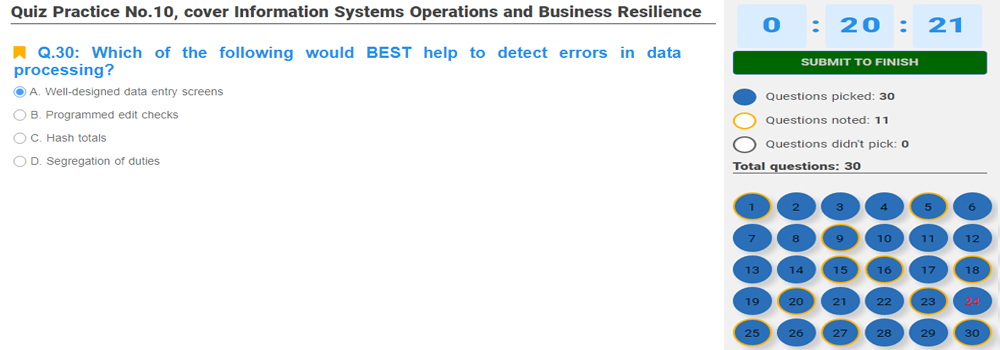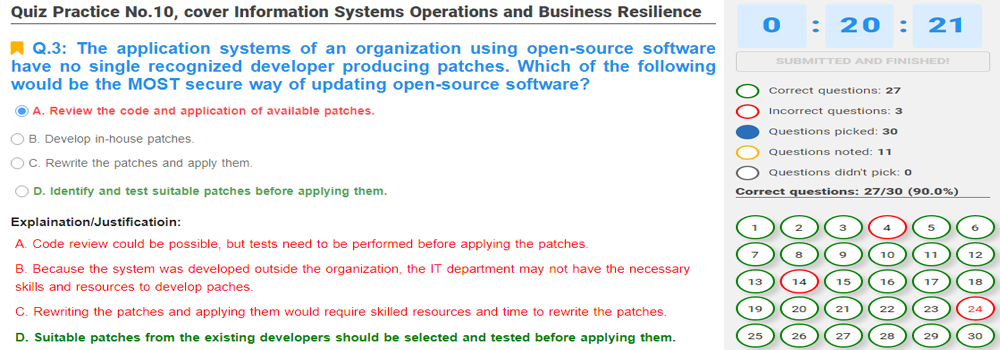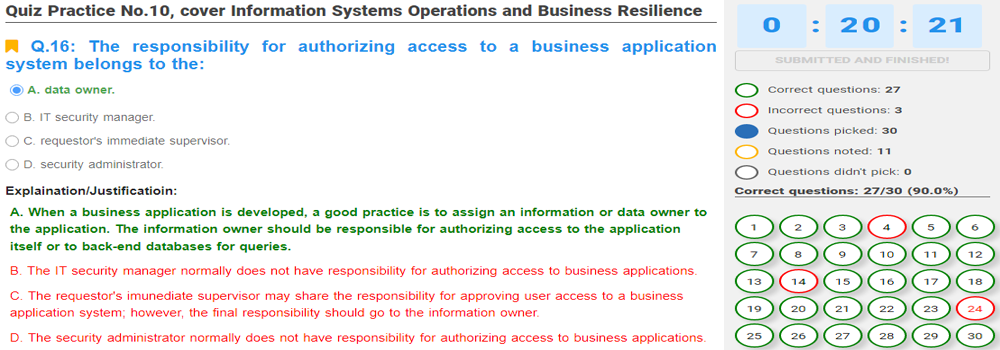[1Z0-076 DUMP UPDATED JULY, 2024] Oracle Data Guard 19C Administration Cert code: 1Z0-076, Questions of the exam: 74, Minutes of the exam: 120, Correct to pass: 61%.
[1Z0-076 DUMP UPDATED JUNE, 2024] Oracle Data Guard 19C Administration Cert code: 1Z0-076, Questions of the exam: 74, Minutes of the exam: 120, Correct to pass: 61%.
[1Z0-076 DUMP UPDATED MAY, 2024] Oracle Data Guard 19C Administration Cert code: 1Z0-076, Questions of the exam: 74, Minutes of the exam: 120, Correct to pass: 61%.
[1Z0-076 DUMP UPDATED APRIL, 2024] Oracle Data Guard 19C Administration Cert code: 1Z0-076, Questions of the exam: 74, Minutes of the exam: 120, Correct to pass: 61%.
[1Z0-076 DUMP UPDATED FEBRUARY, 2024] Oracle Data Guard 19C Administration Cert code: 1Z0-076, Questions of the exam: 74, Minutes of the exam: 120, Correct to pass: 61%.
SOME NOTES ABOUT ORACLE DATA GUARD 19C ADMINISTRATION:
Oracle Data Guard 19C Administration [1Z0-076] is an important and mandatory certification on your path to becoming an expert in your field.
To get this certificate, you need to firmly and confidently grasp the content listed below. Then, you need to pass the exam directly on ORACLE's system. This exam has a duration of 120 minutes, with 74 questions. You need to answer correctly at least 61% of the total questions on the exam.
Below are the contents that you need to grasp firmly and confidently before registering to take the exam on ORACLE's system:
1. Oracle Data Guard Basics
1.1. Describe the Architecture of Oracle Data Guard
1.2. Explain the applicability between physical and logical standby and snapshot databases
1.3. Explain the benefits of implementing Oracle Data Guard
1.4. Explain Data Guard use with the Oracle Multi-tennant databases
2. Managing Oracle Net Services in a Data Guard Environment
2.1. Understand the basics of Oracle Net Services
2.2. Implement Data Guard best-practice solutions in the networking setup
3. Creating a Physical Standby Database by Using SQL and RMAN Commands
3.1. Configure the primary database and Oracle Net Services to support the creation of the physical standby database and role transition
3.2. Create a physical standby database by using the DUPLICATE TARGET DATABASE FOR STANDBY FROM ACTIVE DATABASE RMAN command
3.3. Describe the Database Nologging Enhancements
3.4. Demonstrate the usage of the PL/SQL procedure DBMS_DBCOMP.DBCOMP
3.5. Explain the creation of a standby database by using DBCA
4. Using Oracle Active Data Guard: Supported Workloads in Read-Only Standby Databases
4.1. Perform Real-Time query to access data on a physical standby database
4.2. Describe the supported workload in Active Data Guard (Read-Only) instances
5. Creating and Managing a Snapshot Standby Database
5.1. Create a snapshot standby database to meet the requirement for a temporary, updatable snapshot of a physical standby database
5.2. Convert a snapshot standby database back to a physical standby database
6. Creating a Logical Standby Database
6.1. Determine when to create a logical standby database
6.2. Create a logical standby database
6.3. Manage SQL Apply filtering
7. Oracle Data Guard Broker Basics
7.1. Describe the Data Guard broker architecture
7.2. Describe the Data Guard broker components
7.3. Explain the benefits of the Data Guard broker
7.4. Describe Data Guard broker configurations
8. Creating a Data Guard Broker Configuration
8.1. Create a Data Guard broker configuration
8.2. Manage the Data Guard broker configuration
8.3. List the new Data Guard Broker commands
9. Monitoring a Data Guard Broker Configuration
9.1. Use Enterprise Manager to manage your Data Guard configuration
9.2. Invoke DGMGRL to manage your Data Guard configuration
9.3. List the new Data Guard Broker VALIDATE commands
10. Configuring Data Protection Modes
10.1 Describe the data protection modes
10.2. Change the data protection mode of your configuration
11. Performing Role Transitions
11.1. Explain the database roles
11.2. Perform a switchover
11.3.Perform a failover
11.4. Explain how to keep physical standby sessions during role transition
12. Using Flashback Database in a Data Guard Configuration
12.1. Configure Flashback Database
12.2. Explain the advantages of using Flashback Database in a Data Guard configuration
12.3. Explain the functionality of replicated restore points
12.4. Explain the functionality of automatic flashback
13. Enabling Fast-Start Failover
13.1. Configure fast-start failover
13.2. View information about the fast-start failover configuration
13.3. Manage the observer
13.4. Perform role changes in a fast-start failover configuration
13.5. Manually reinstate the primary database
14. Backup and Recovery Considerations in an Oracle Data Guard Configuration
14.1. Use Recovery Manager (RMAN) to back up and restore files in a Data Guard configuration
14.2. Offload backups to a physical standby database
14.3. Enable RMAN block change tracking for a physical standby database
14.4. Recover your primary database over the network
14.5. Synchronize Standby Database from Primary Database with one command
14.6. Using Automatic Block Media Recovery
15. Patching and Upgrading Databases in a Data Guard Configuration
15.1. Patch and upgrade databases using traditional patch methods
15.2. Perform rolling upgrades
16. Optimizing and Tuning a Data Guard Configuration
16.1. Monitor configuration performance
16.2. Optimize redo transport for best performance
16.3. Optimize SQL Apply
16.4. Describe Tunable Automatic Outage Resolution
16.5. List Diagnostic Tools in Active Data Guard (Read-Only) environment
17. Managing Physical Standby Files After Structural Changes on the Primary Database
17.1. Describe the primary database changes that may or may not require manual intervention at a physical standby database.
18. Using Oracle Active Data Guard: Far Sync and Real-Time Cascading
18.1. Use Far Sync to extend zero data loss protection for intercontinental configurations
18.2. Describe how to create a far sync instance by using RMAN
18.3. Describe the Real-Time Cascading
19. Enhanced Client Connectivity in a Data Guard Environment
19.1. Configure client connectivity in a Data Guard configuration
19.2. Implement failover procedures to automatically redirect clients to a new primary database
19.3. Using Application Continuity in a Data Guard Environment
GOODLUCK TO YOU!!!




